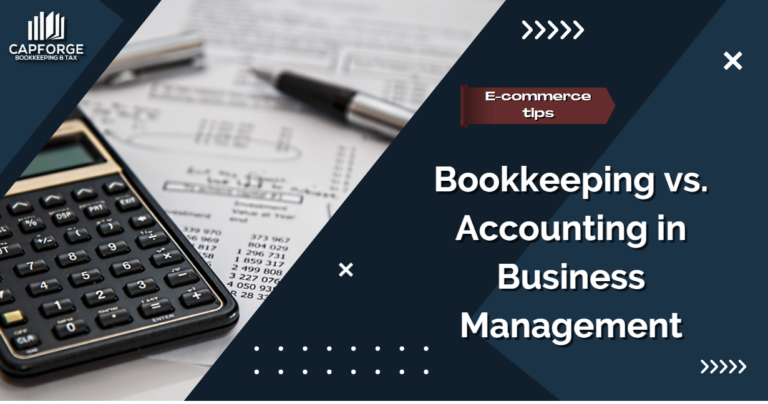7 Challenges Every Amazon Seller Faces
It seems that every day now, you read about some 19-year-old college dropout who makes a six-figure income selling on Amazon. Or about some desperate housewife who saved her family from the brink of bankruptcy by selling random household items online.
Stories like this make it sound easy, as if anyone can simply snap a photo of an item lying around the house, upload it to Amazon, and kick back while the revenue pours in. And while it’s true that there’s a lot of money to be made on the platform, it is not a get-rich-quick scheme. If you truly want to make a living this way, be prepared for a steep learning curve, lots of upfront costs, and a host of frustrations.
Below is a list of 7 challenges every Amazon seller faces, so you can better be prepared for the road that lies ahead.
1. Entry Barriers
The first challenge begins before you even get up and running. It involves getting approval to sell in certain product categories. And it’s not as easy as you might think.
Amazon has some pretty strict policies that dictate who can sell, what can be sold, and in what manner. The approval process is designed to curb the number of new sellers who break the company’s rules—kind of like a security screening.
In short, it’s not that getting approval is impossible, it’s just that you’ll have to jump through some hoops first.
2. Daunting Competition
Given that Amazon is the largest ecommerce retailer in the world, it goes without saying that there is a lot of competition amongst sellers. But can you guess exactly how much competition?
According to Marketplace Pulse, there are approximately 3 million active Amazon sellers in the world today. And of those 3 million, less than 10% earned $100,000 in annual sales, with only 1% achieving $1 million in sales.
We don’t say this to discourage you, we just want to give you an accurate idea of what you’re up against.
There can also be a darker side to the competition as well. Once you go to the effort of carving out a place for yourself near the top of a product category you can expect to see copycat sellers trying to hone in on your sales with knockoff products often priced lower than what you are asking. In some cases, these knockoffs might even copy trademarked or patented designs or intellectual property. You do have some recourse using Amazon’s brand registry system but fighting these guys (typically offshore vendors located in places you can’t reach through normal legal channels) can be a game of whack-a-mole where as soon as you shut one down another pops up. Sometimes it even turns out to be your own vendor working against you by supplying others with copies of your product!
The best defense against this is often a good offense: aggressively protecting your brand and encouraging customers to choose the original!
3. Crafting the Perfect Listing
There’s a lot more that goes into an Amazon listing than meets the eye.
For starters, Amazon has its own set of product image requirements, which dictate not only technical specifications, but how the product is portrayed. For example, backgrounds must be pure white and the image cannot contain additional graphics, text, or inset images. On top of that, there is a whole separate list of best practices that you’ll need to incorporate if you want to outshine your competition.
As if that’s not enough to worry about, you’ll also need to craft some creative copy. It’s not as simple as it sounds, as you’ll want to include specific keywords that will attract your target audience.
4. Product Reviews & Seller Feedback
Buying things online is risky. We’ve all had the experience of ordering something online only to be disappointed when the item arrives. One of the ways customers circumvent that risk is by reading product reviews and seller feedback. We’ll explain the difference between the two for those who are unfamiliar.
Product reviews are ratings of the product itself. Examples include: “These shoes are so comfy!” or “The seam came apart after one wash.”
Seller feedback, on the other hand, is an assessment of the seller’s customer service and fulfillment. Examples include: “Accidentally ordered the wrong size so they sent me a replacement free of charge!” or “Tried reaching out to this seller to ask a question but they never got back to me.” Keep in mind that if you’re using FBA (fulfillment by Amazon), much of this will be irrelevant since Amazon handles shipping and returns.
As you can imagine, product reviews and seller feedback heavily influence buying decisions. However, the problem is it’s extremely difficult to get customers to leave a review, and Amazon prohibits sellers from incentivizing customers to do so (ex: you’re not allowed to offer a discount in exchange for a review). Couple that with the fact that most customers only leave a review when they have a negative experience and it’s easy to see why this is one of the most frustrating challenges Amazon sellers face. It’s even more frustrating for new sellers, who are competing with established sellers who already have substantial product reviews and seller feedback.
5. Returns
One of the reasons Amazon is so popular is because they make returning items easy, cheap, and oftentimes free. It’s great for buyers, but not so much for sellers. Here’s why.
Sometimes when customers are conflicted on which product to buy, they’ll purchase multiple versions from multiple different sellers and simply return the ones they don’t like. That’s a cost that comes directly out of the seller’s pocket.
Another issue is that the item may or may not be returned in good condition. And while Amazon will repackage and resell your items for you, it’s entirely at their discretion in regards to whether an item is returned in good condition. If the item is damaged in some way and ends up getting resold to another customer, that can result in a negative review.
Fortunately, there is an option wherein you can have Amazon ship the product back to you. The downside is that you’ll have to front the cost of shipping, but the upside is that you’ll be able to assess the condition of the returned item and prevent damaged items from being sold to other customers.
6. Taxes
Taxes are complicated. Not only do they vary from state to state and country to country, but they’re constantly changing.
For most of its history, Amazon placed the burden of filing and paying sales tax on sellers. But that’s not the case anymore.
Many states have passed laws that have placed the burden back on Amazon. As a result, the company now automatically collects sales tax in all but four states: Tennessee, Louisiana, Mississippi, and Florida.
If you need help collecting sales tax in those four states, you have a couple of options. You can either use an automated sales tax service like TaxJar, or you can hire an accounting firm like ours that specializes in taxes. We recommend TaxJar only if you plan on selling in three or four of those states. If you only plan on selling in one or two, it would be cheaper to use us.
7. Restricted products
One of the more worrisome issues is that at any time, Amazon can restrict your products, thereby prohibiting you from selling them.
Let’s say, for example, that you’re selling Kirkland Signature protein bars. Without advanced warning, Kirkland Signature can decide that they no longer want third-party sellers listing their products on Amazon—effective immediately. If you have 50 boxes of Kirkland Signature protein bars sitting in an Amazon warehouse, you’ll then have to pay for those boxes to be shipped back to you, and then you’ll have to find another way to sell them.
Fortunately, Amazon does have a brand registry that helps you avoid this issue. It’s certainly worth looking into, as you won’t have to compete with other people selling the same product.
If at the end of this article you feel completely overwhelmed and defeated, remember that challenges are merely obstacles to be overcome. Talk to any successful Amazon seller and they’ll tell you that they faced many hurdles along the way. However, they’ll also tell you that it’s well worth sticking it out.








